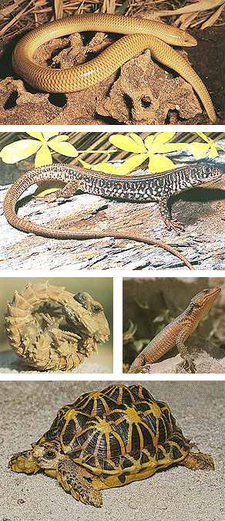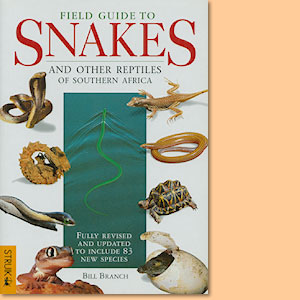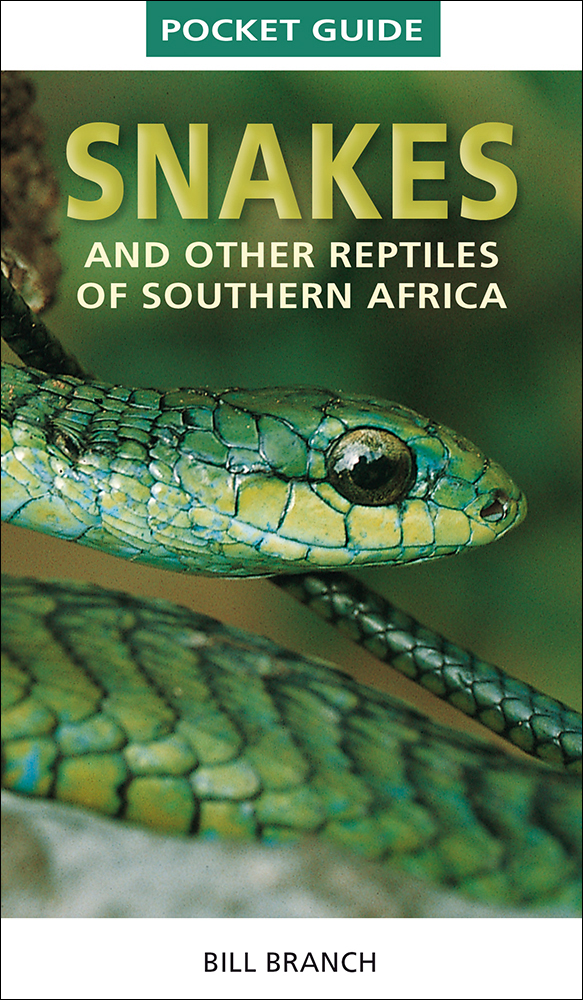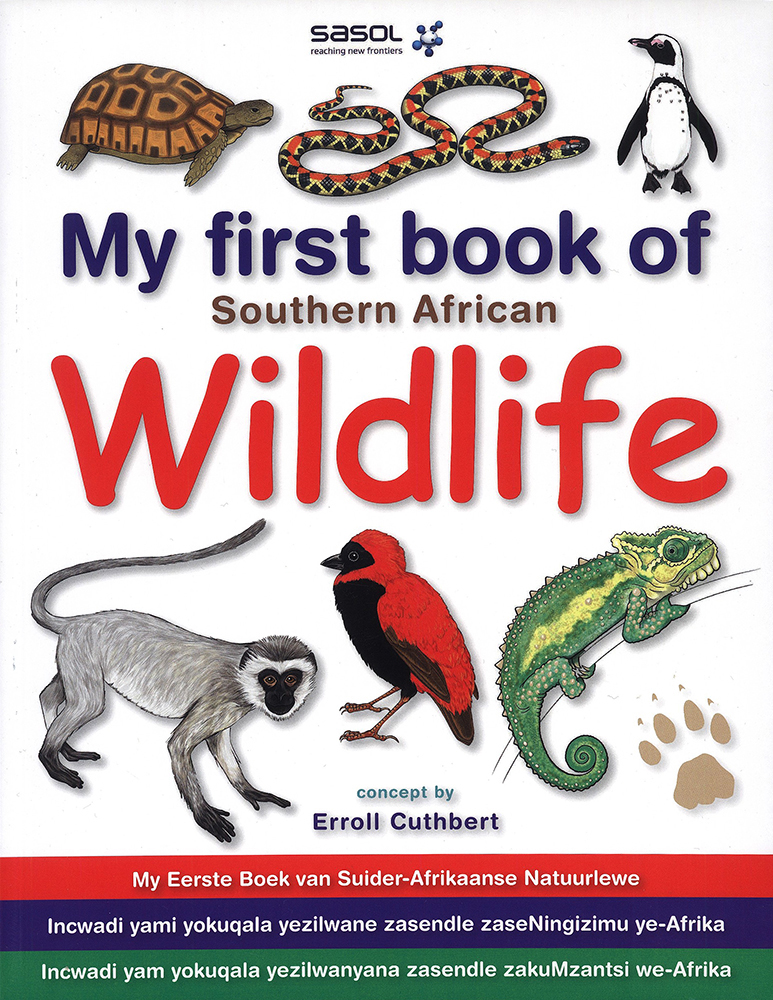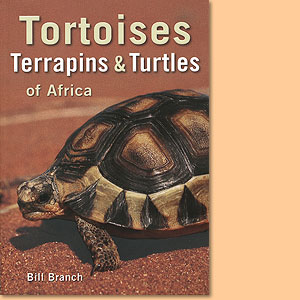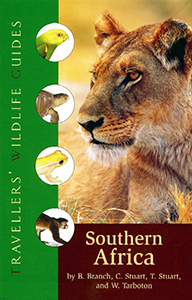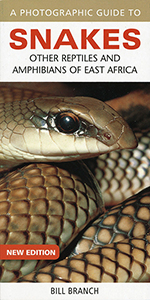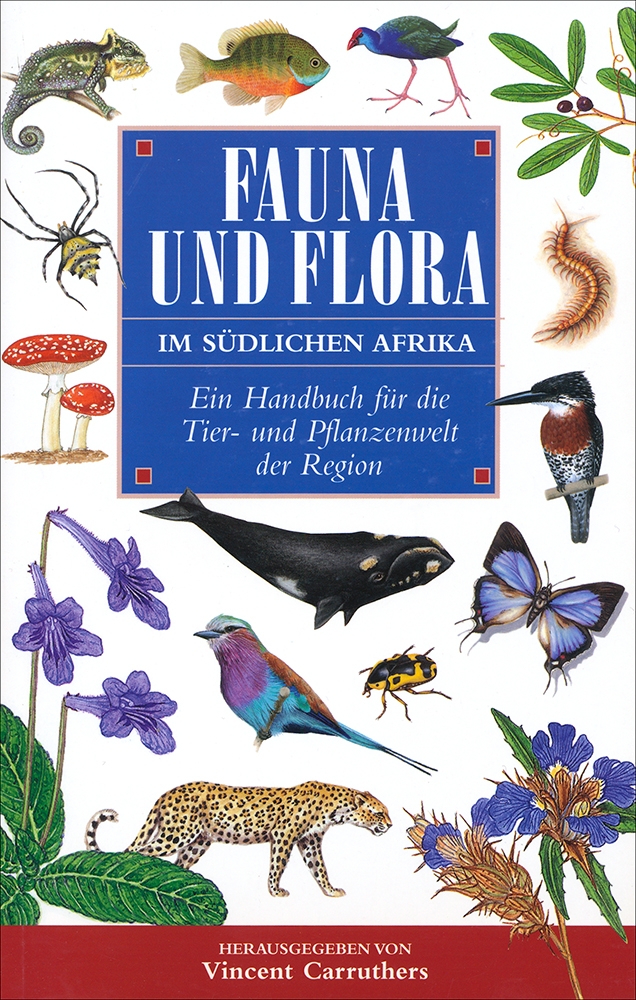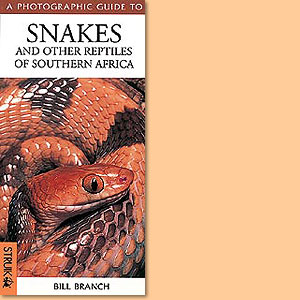Field guide to snakes and other reptiles of Southern Afrika, by Bill Branch
Please check the following two examples how reptiles are described by Bill Branch in Field guide to snakes and other reptiles of Southern Afrika.
Example: Holub's Sandveld Lizard
Nucras holubi(Pl. 60)
SVL (60-70 mm; max. SVL 73 mm.
A small sandveld lizard with a striped colour pattern. It has a parietal foramen on its crown, 5-9 enlarged plates under each forearm, 41-65 scale rows at midbody, and 3-7 granules between the supraoculars and supradliaries.
It has 10-21 femoral pores under each thigh. Juveniles are more distinctly patterned. Adults are grey or buff to reddish-brown above, with three well-marked, pale stripes along the back (that extend onto the back of the head), and 1-2 rows of spots on the flanks. The tail is light buff to coralred, and the belly is creamy white.
Biology and breeding: This species forages around grass tussocks and at the base of bushes, retreating into a small tunnel beneath a rock. It may climb into low bushes to thermoregulate. It preys on small insects, particularly beetles. From 1-7 (usually 4-5) eggs are laid in midsummer. Hatchlings measure 50-60 mm TL.
Habitat: Broken rocky ground in mesic savannah.
Range: Northern Cape and KwaZulu-Natal, through Free State to NE Cape, Botswana, NW and N. provinces, and Zimbabwe to South Malawi. There is an apparently isolated population in central and North Namibia.
Example: Horned Adder
Bitis caudalis (Pl. 13)
Max. SVL 372 mm male, 548 mm female.
This small, squat adder has a single horn on the ridge above each eye (although this may rarely be absent). The head is triangular. The scales are strongly keeled, in 23-31 rows at midbody. Coloration is blotched, and regional variations occur. The back varies in colour from light grey (Etosha Pan) through buff to reddish (N. Cape and Kalahari) or greyish-olive to light brown (Karoo), with a series of dark (sometimes pale-edged and/or pale-centred) dorsal and lateral blotches. The top of the head has a broad, dark V-shape or hourglass-shape, and dark bars may radiate from the eye to the jaw angle. The tail tip is often black. The belly is uniform cream-white. Females have short tails, keeled subcaudals and duller colours.
Biology and breeding: Common. Prefers to lie in the shade of small scrub and shuffles down into the sand, which aids concealment and offers protection from heat. Active at dusk, it may sidewind in loose sand. The diet consists mainly of small lizards (rodents and amphibians arc also eaten) that are captured by ambush, and may be attracted to enter the snake's range bv the waving black tail tip of the latter. The snake usually holds on to the prey. The horned adder hisses and strikes at first, but tames well (except those from N. Province). The venom is mild, causing swelling, pain and some necrosis. No fatalities known, antivenom rarely necessary. Males engage in combat in breeding season. Mating occurs in October-November, gestation takes 90-110 days. Four to 15 (max. 27) young (100-150 mm II.) born in December-February, coinciding with the hatching of lizard eggs.
Habitat: Sandy mesic and xeric savannah (entering rocky ridges in Gauteng), but absent from mobile dunes.
Range: Widespread in arid western region, throughout Karoo and Kalahari to S. Angola, reaching S. Zimbabwe, Gauteng, NW and N. provinces.
This is an extract from the book: Field guide to snakes and other reptiles of Southern Afrika, by Bill Branch
Book title: Field guide to snakes and other reptiles of Southern Afrika
Author: Bill Branch
Struik Publishers
3rd edition, Cape Town 1998
ISBN 9780883590423
Softcover, 15x21 cm, 399 pages, 600 full colour photos
Branch, Bill im Namibiana-Buchangebot
Field guide to snakes and other reptiles of Southern Afrika
Fully revised and updated, this field guide to snakes and other reptiles of Southern Afrika includes 83 new species.
Snakes and other Reptiles of Southern Africa (Pocket Guide)
This pocket guide features 276 species of snakes and other reptiles of Southern Africa.
My first book of Southern African wildlife
My first book of Southern African wildlife introduces children to 58 mammals, 58 birds and 56 reptiles.
My first book of Southern African snakes and other reptiles
My first book of Southern African snakes and other reptiles introduces 56 different species in English, Afrikaans, Zulu and Xhosa and is made for young readers.
Tortoises, terrapins and turtles of Africa
Good colour photographs for easy identification of 46 chelonian species of Africa, tortoises, terrapins and turtles.
Traveller's Wildlife Guide Southern Africa
Traveller's Wildlife Guide Southern Africa introduces 500 of Southern Africa’s most common amphibians, reptiles, birds, and mammals.
A photographic guide to snakes, other reptiles and amphibians of East Africa
This is a handy and well made photographic guide to most of the common snakes, reptiles and amphibians of East Africa.
Fauna und Flora im südlichen Afrika
Fauna und Flora im südlichen Afrika: Ein sehr beliebtes Handbuch für die Tier- und Pflanzenwelt der Region.
A photographic guide to snakes and other reptiles of Southern Africa
Althoug a handy and basic guide, this photographic guide to snakes and other reptiles of Southern Africa shows excellent photographs.

